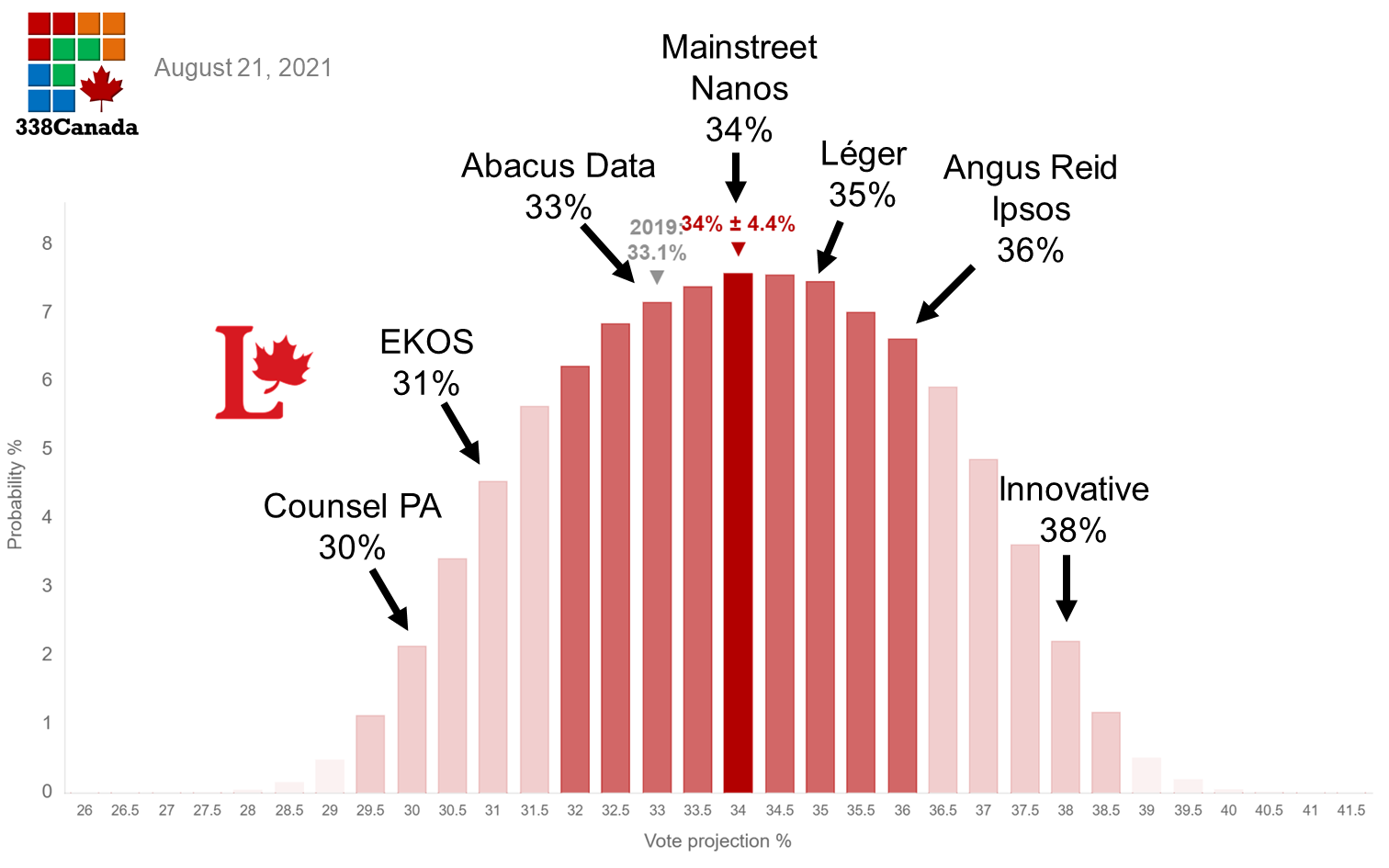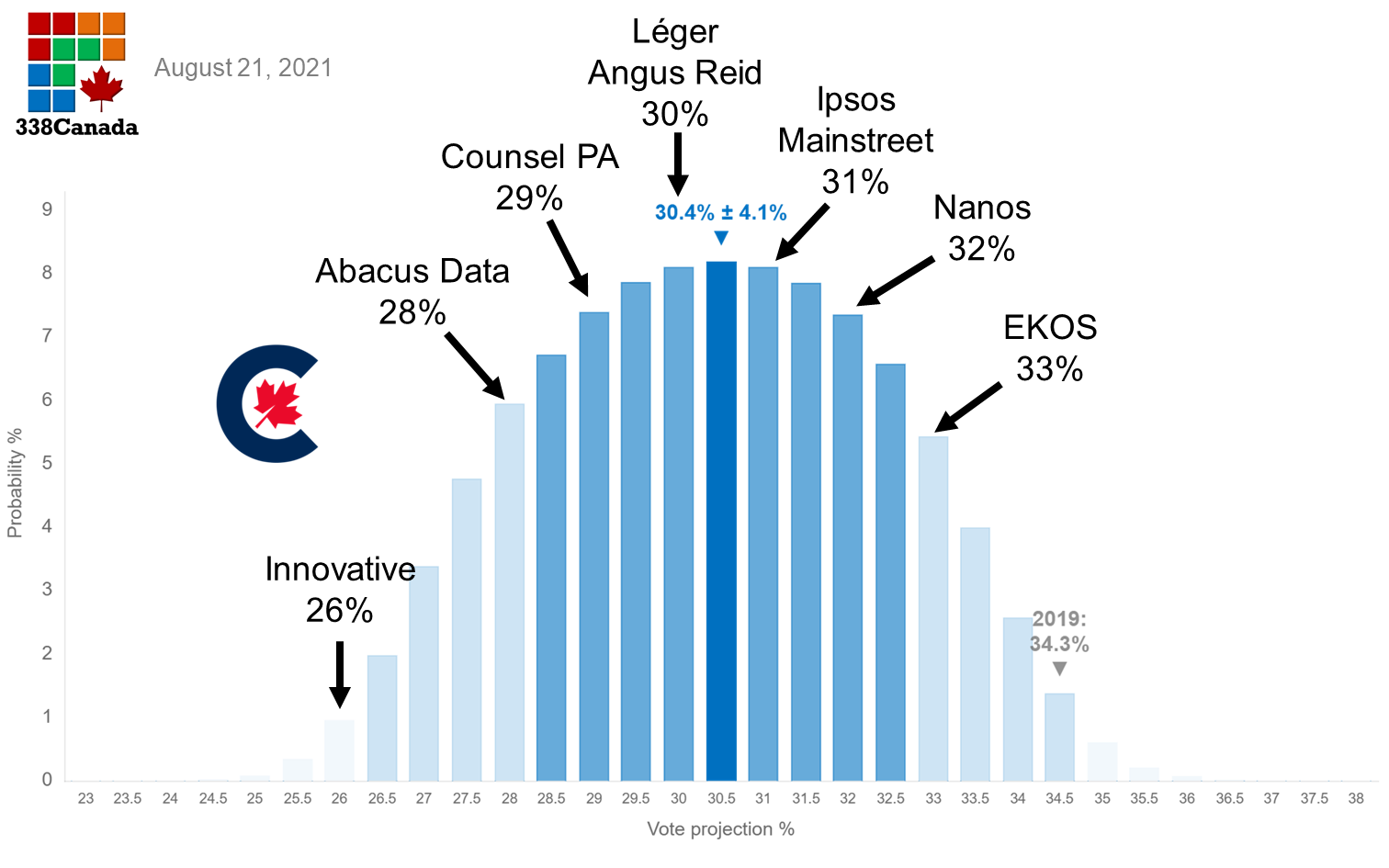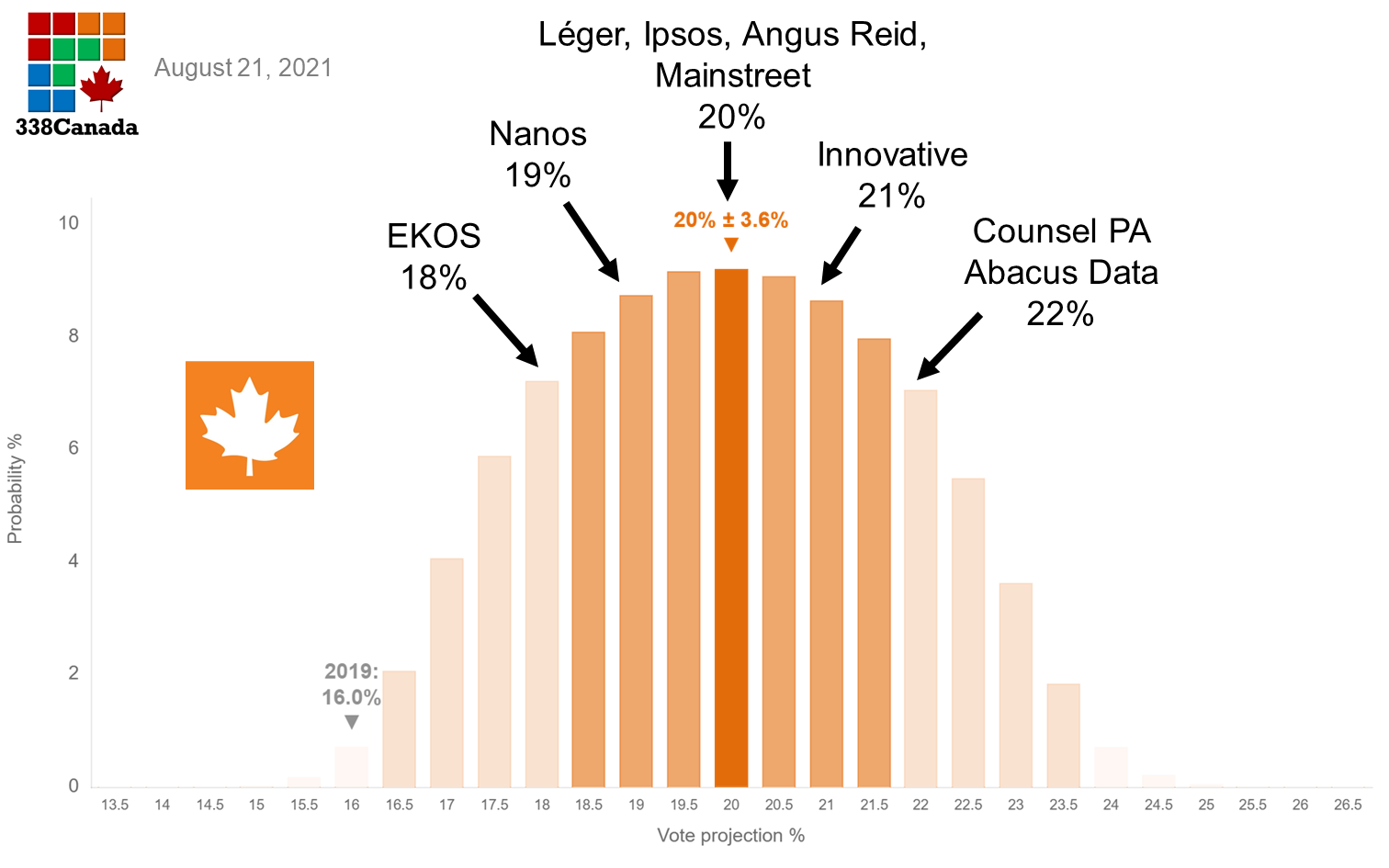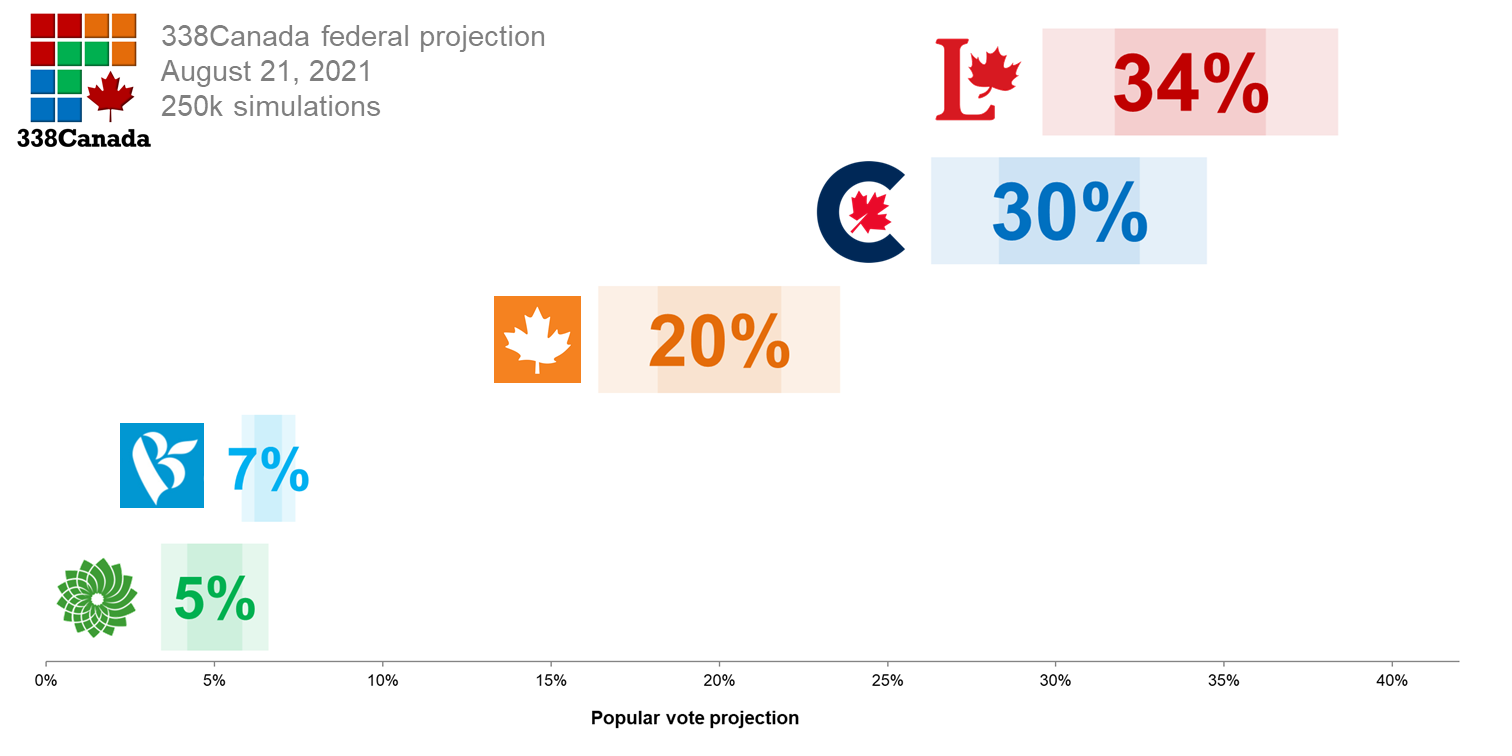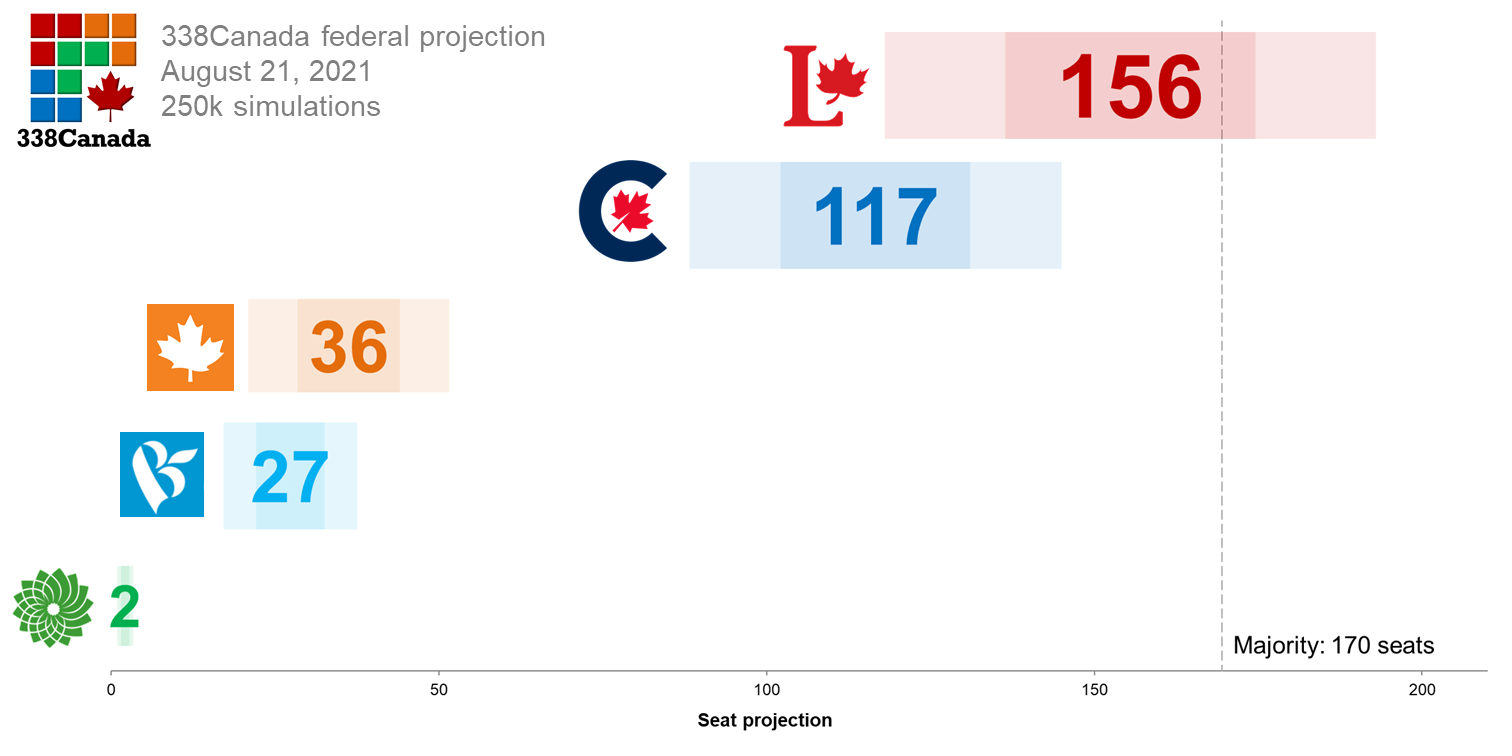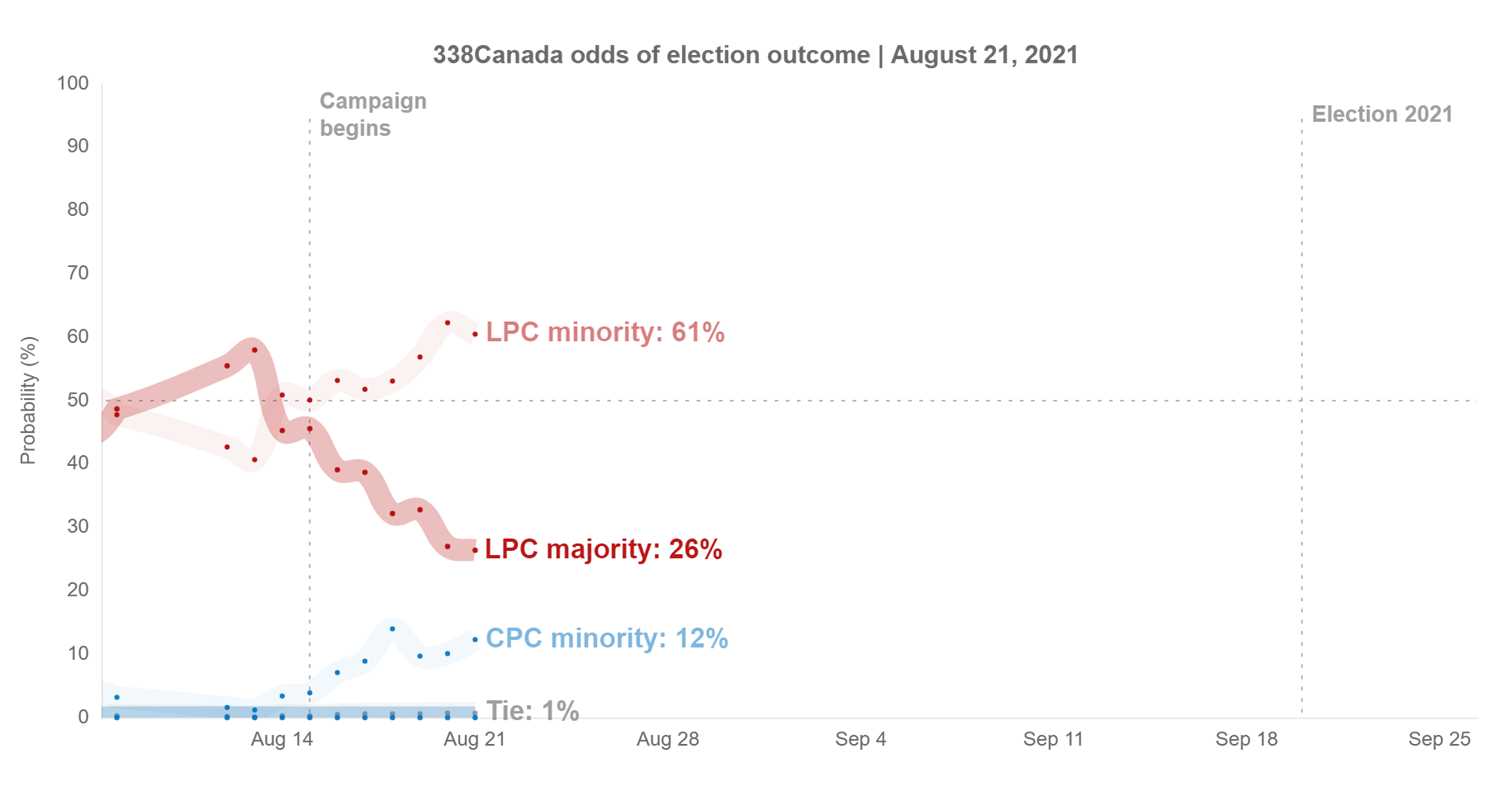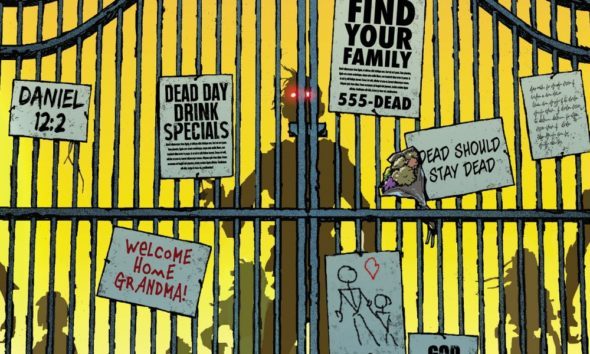#338Canada: The Liberals stumble out of the gate in week one

“#338Canada: The Liberals stumble out of the gate in week one”
- Léger, Ipsos, and Abacus Data all measured the Liberals ahead of the Conservatives by a margin of five points, and the NDP at or above the 20 per cent-mark. Although the regional breakdown varies from one poll to another (which is entirely expected), the overall numbers would suggest the Liberals remain in the driver seat, and are headed towards either a stronger minority or a razor-thin majority.
- The Angus Reid Institute (ARI) also measured Trudeau’s Liberals ahead of the pack with a six-point lead nationally over the Conservatives. ARI also places the Liberals ahead by double-digits over the Bloc Québécois in Quebec and over the Conservatives in Ontario. These numbers would strongly suggest the LPC could reach majority territory.
- Meanwhile, Mainstreet Research and EKOS Research Associates both began their daily rolling polls and, interestingly, have both detected a significant tightening of the race between the main parties. EKOS’ first numbers were mostly in line with other firms with the Liberals ahead by 5 points over the Conservatives, but the week ended with a statistical tie between both parties. Mainstreet saw the same overall trends, and even showed a 33-33 per cent tie on Friday. As a data nerd myself, I love following rolling polls as they give you fresh data to sink your teeth in everyday, but those daily fluctuations, although entirely normal in statistics, may be like seeing how sausage gets made for the general public. We must be careful not to get carried away by small daily swings (and that naturally is also true of projections!). Besides, as of this morning, Mainstreet had the LPC back in the lead by a 3-point margin.
- Nanos Research also started its rolling poll this weekend and has the Liberals ahead by two points over the Conservatives (essentially a statistical tie). Nevertheless, Nanos’ regionals still give a noticeable edge to the Liberals (regional data is paywalled here).
- Finally, Counsel Public Affairs measured the race as a dead heat between the Liberals (30 per cent) and the Conservatives (29 per cent), with the NDP inching even higher with 22 per cent. The biggest contrast between Counsel and other firms is its Quebec numbers, where Counsel has the BQ and the Liberal only one point apart.
The updated 338Canada projection has the Liberal Party at an average of 34 per cent nationally. However, as you can see on the chart below, there is a notable spread between where pollsters have measured LPC support. All polls nonetheless fit into a 34 per cent ± 4 per cent interval:
The Conservatives sit at an average of 30 per cent, with polls ranging from 26 to 33 per cent:
As for the NDP, it is still hovering around the 20 per cent mark, with polls ranging between 18 and 22 per cent.
Here are the 338Canada vote projections for all major parties. Notice that the confidence intervals (the coloured bars) of the LPC and CPC now overlap significantly, meaning that while the Liberals still hold the lead in the aggregate, the Conservatives are now well within range, which was not the case one month ago:
Breaking down these numbers per regions and demographic tranches, the 338Canada model has the Liberals at an average of 156 seats—essentially where the LPC stood at dissolution. The Conservatives sit an average of 117 seats, barely below their 2019 result.
The only party currently projected to make significant gains is the NDP, with an average of 36 seats (compared to 24 seats in 2019). This tightening of the race, combined with stronger support for the NDP, has significantly decreased the odds of a Liberal majority over the past week. As of this writing, the most likely scenario would be, once again, a Liberal-led minority in the House of Commons:
“The earlier you fall behind, the more time you have to catch up,” is something I jokingly tell my students in the first week of a semester, and it is, obviously, terrible advice. How could one explain why the Liberals came out so flat in week one? A Liberal optimist would argue they may be keeping their best game for when more Canadians come back from vacations and begin following the campaign more closely. While it is generally true that it’s better to finish strong than to start strong, sometimes (often?) the first weeks of a campaign can set the tone for what follows. One should never underestimate the importance of momentum (or at least perceived momentum) in politics, especially during this short of a campaign. Just ask the Nova Scotia Liberals.
There is little doubt from the numbers released this week that the LPC stumbled out of the gate. Perhaps the good news for Justin Trudeau is that he still has four weeks to catch up.
* * *
Details of this projection are available on the 338Canada page. To find your home district, use this list of all 338 electoral districts, or use the regional links below:
If you liked the article, do not forget to share it with your friends. Follow us on Google News too, click on the star and choose us from your favorites.
For forums sites go to Forum.BuradaBiliyorum.Com
If you want to read more News articles, you can visit our General category.
